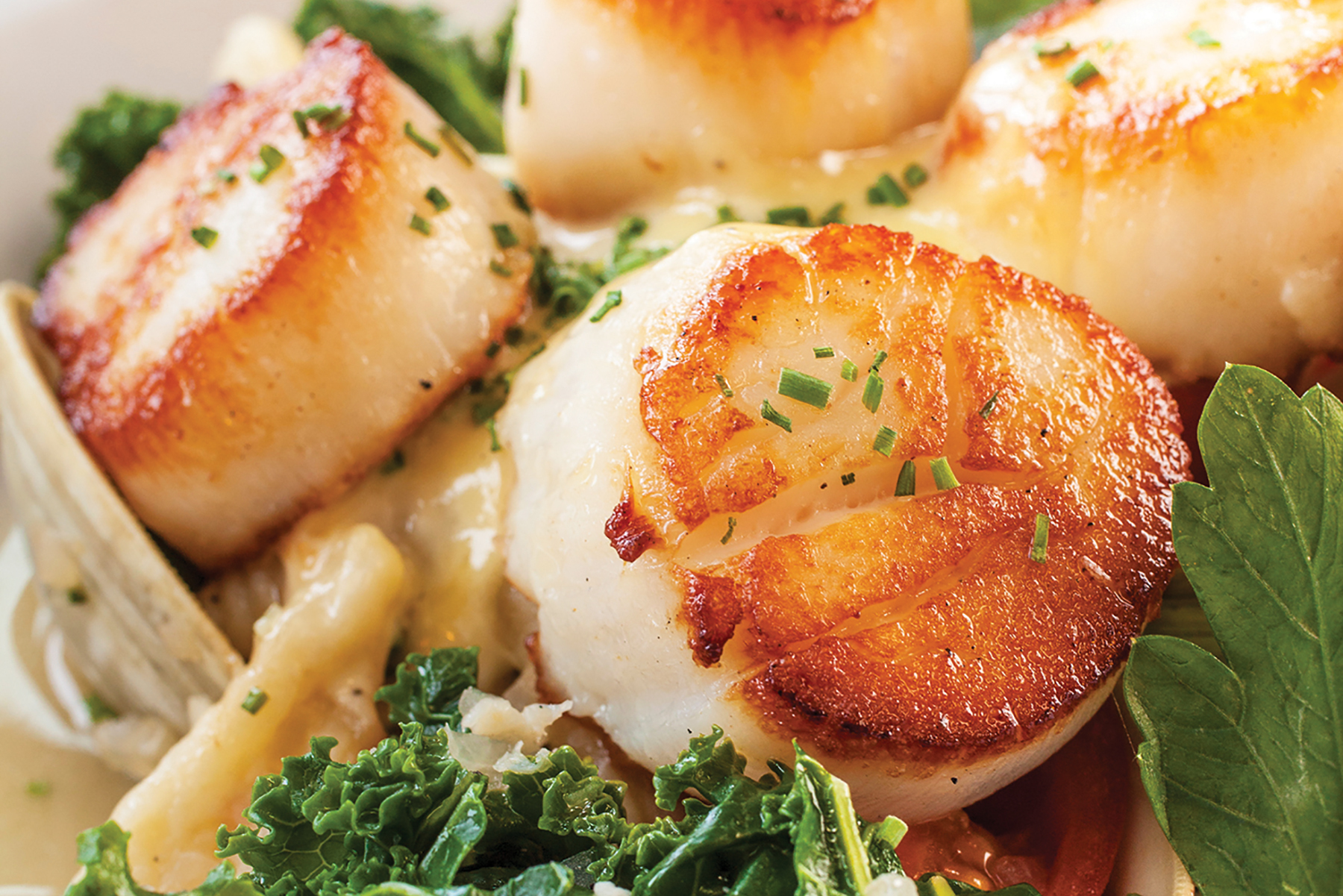Sweet On Scallops

Scallop season has arrived, so now is the perfect time to enjoy these succulent treats from the sea. Not only are they delicious, they are also good for you! Widely considered as one of the healthiest foods out there, scallops are, according to webmd.com, “made up of 80% protein and sport a low fat content, [and they] are rich in vitamins and minerals” (such as zinc, magnesium, and vitamin B12). Additionally, they also contain omega-3 fatty acids, which help lower cholesterol, regulate your heartbeat, support nervous system function, and may support memory, webmd.com continues. Furthermore, since they are such an excellent source of lean protein, scallops can help you feel full longer.
Known as a seafood delicacy, scallops are often highly regarded for their soft texture and taste. They are delectably tender and sweet whether pan seared, baked, or grilled and are found in restaurants around the globe. Scallops are bivalves, meaning they have two hinged shells. The muscle that opens and closes the shell is called the abductor muscle, and is the part we eat. The term “scallop” is actually applied to numerous clams or mollusks and come in many varieties, the most common being bay or sea scallops. Let’s dive more into scallops, the terms surrounding them, shopping for them, and how to prepare this succulent and sweet jewel of the sea.
As I mentioned, scallops typically fall under two distinct categories: bay or sea. Sea scallops are the larger of the two (often growing as big as two inches) and bay scallops are bite-sized (often the size of a dime). Sea scallops are caught and harvested year-round in deep cold sea water, whereas bay scallops, on the other hand, are caught in shallow bay waters. While they are usually a quarter of the size of sea scallops, they tend to be much sweeter in flavor, more tender, and succulent. Bay scallops are generally less expensive than sea scallops and are an excellent choice for the French classic – and perhaps the most famous baked scallop dish – “Coquilles Saint Jacques” … scallops baked au gratin, with creamy sauce and breadcrumbs forming the crust and oozing with cheese.
Scallops can be processed by being packed either “wet” or “dry.” When shopping for scallops, both sea and bay, look for dry-packed ones. Dry-packed scallops have been shucked, packed on ice, and have no chemical additives, whereas the wet-packed, on the other hand, are very white and more
translucent in appearance and have been soaked in sodium tripolyphosphate, which preserves their color and texture while frozen. Wet-packed scallops tend to hold a lot more water. This presents itself when trying to pan sear and the excess water “steams” the scallop, making it difficult to get them seared and leaving you with a “soggy” dish.
Following is how I achieve the perfectly caramelized exterior with wet scallops:
– Pat scallops dry and sprinkle with salt (the salt will draw out excess water from the scallop).
– Heat a non-stick pan until very hot. Note: It’s best to use a high smoke point oil, such as grapeseed oil.
– Place the scallops in the hot pan with space between each (this helps minimize the scallops from “steaming”). Do not move them for 2 minutes, in order to maintain the seared crust.
– Turn scallops over and sear for an additional 2 minutes.
– Remove, plate, and serve.
Whether served as a starter dish for a gathering of friends or as a delectable date night dinner, scallops are not only delicious and easy to prepare, they’re good for you too. So this spring, I hope you get a chance to savor some scallops.
Bracy Dutton
Bracy Dutton and his wife Bridget are the owners of Fishin’ Shrimp, serving Wake Forest and the surrounding area. Fishin’ Shrimp is bringing fried and steamed seafood specialties to the area via their food truck and is accepting party platter orders through their website for pick up or delivery most weekends. For more great seafood (that you don’t have to cook yourself), follow Fishin’ Shrimp on Facebook and Instagram @fishinshrimp and visit fishinshrimp.com.

